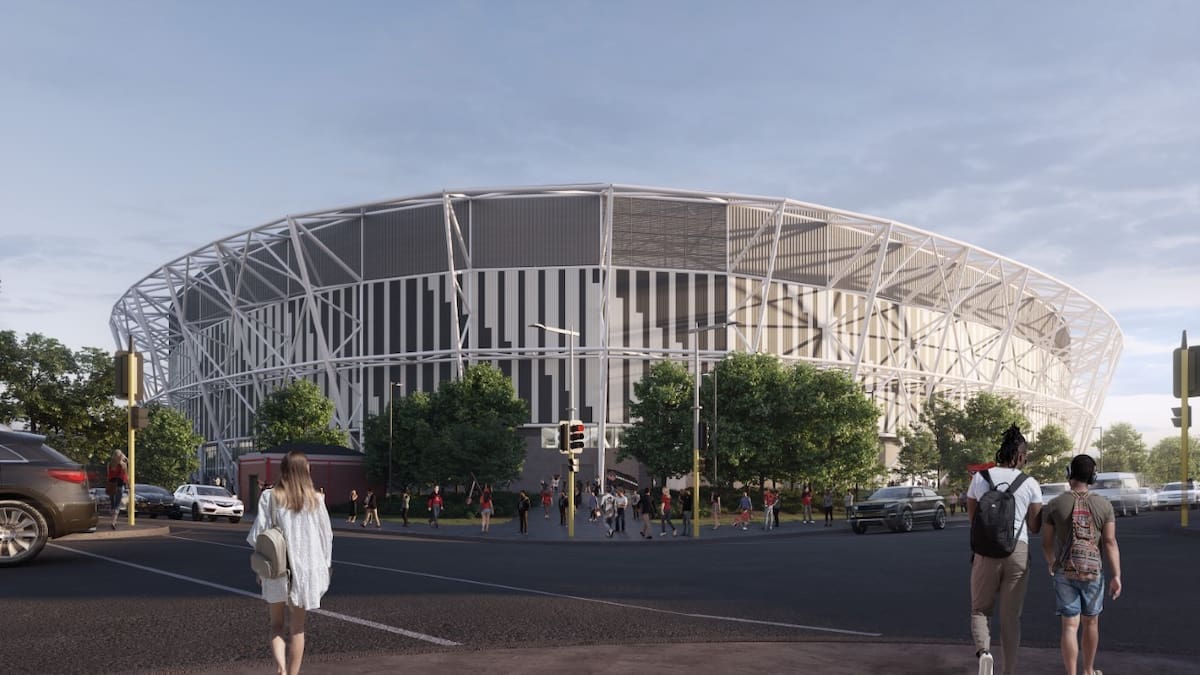OPINION
One of the most intriguing elements in the two competing bids for
a South Island NRL franchise is the proposition from
David Moffett and the South Island Kea that fans can own part of the club.
Moffett has a unique CV (former chief executive of the
NRL and
New Zealand Rugby) and is aiming for a 2028 kickoff of the Kea, based in
Christchurch’s Te Kaha Stadium.
That stacks up against the previously announced Christchurch-based consortium, headed by former
Canterbury Rugby League chairman
Tony Kidd, which is seeking overseas investment for a team also to be sited at Te Kaha.
“We will be offering fans an opportunity to own part of the team either through a co-operative structure, which is a common approach taken by major European football franchises, or the opportunity to buy shares in the company,” Moffett told the
Herald.
“It will be a first for New Zealand and for rugby league and is based on a co-operative model which inherently democratises decision-making and will allow fans to govern the team’s operations from selecting management to shaping the strategic direction. By empowering fans as owners, we will foster a strong sense of community and inclusivity.”
It’s a bold play that Moffett says will pique the NRL’s interest - but can fan ownership work in little old New Zealand?
There’s no doubt it is an established concept internationally.
In British football, for example, many clubs are fan-owned or part-owned.
They are sometimes a reaction to the enormous amounts of money billionaire owners and global companies juggle - often leveraging massive debt to fuel on-field glory and off-field dividends, hiking ticket prices and upsetting fans.
Scotland’s St Mirren club has been 51 per cent fan-owned since a 2021 campaign called “Buy The Buds” saw fans emerge in control.
England’s Exeter City is now in League One (the third tier division) after the Exeter City Supporters’ Trust became majority shareholders following the relegation of the club from the English Football league in 2003 - and the subsequent arrest of the chairman and vice-chairman over allegations of financial irregularities at the club.
One of the whistleblowers was celebrity spoon-bending psychic and then club co-chairman Uri Geller - who clearly had not foreseen what was occurring.
Supporters discovered a supposed debt of £2 million ($4.19m) was almost £5m - but that was cleared in 2005, partially because of a good FA Cup run but also because the trust began putting money from supporters back into the club - over £2m since 2003. The trust has 3500 members (annual fee £24, plus contributions to the £100,000 the trust gives the club each year) - so the financial burden is not heavy.
The members don’t get to decide which striker the club buys, for example, but trustees are elected from their numbers to approve the playing budget on the club board, so still have a say.
The trust isn’t the only source of income - sponsorship, ticket sales (average crowd a little under 7000) and a good academy which sells young players on for big fees (like current Premier League star Ollie Watkins, of Aston Villa).
Perhaps the most successful fan-owned club hails from the US - NFL team the Green Bay Packers have been community-owned since 1923, winning 13 national championships and four Super Bowls.
Instead of a billionaire owner, the Packers have more than 500,000 community shareholders - none of whom can own more than about 4 per cent of the team’s stock.
They can’t sell or cash in their shares and, unlike other teams, which generate profits for billionaire owners, all Packers profits are invested back into the club (often stadium upgrades). It’s a public funding model that has consistently paid for community-oriented projects, even those that didn’t yield a huge financial return.
There is a catch.
The Green Bay Football Corporation can and has gone back to the public for more money several times.
But Packers fan-owners are reputed to be generally happy to pay - fuelled by the joy of ownership and tribal community instincts, rather than the profit-driven motivation of a billionaire with little or no connection to the area.
So can a rugby league enterprise in the South Island find big numbers of member shareholders? Or put together something like the Exeter City story, involving smaller numbers but harnessing that tribal instinct, while giving them more say?
It won’t be easy but Moffett may well be the man to achieve it.
In another life, I worked with Moffett as an adviser when he headed New Zealand Rugby.
He doesn’t take advice well but that is part of his drive and commitment.
It’s notable he was part of the Kidd consortium before shaping his own proposal; he is not a man easily dissuaded from his path.
There are other hurdles - a Papua New Guinea franchise is also wooing the NRL and may have priority on a political basis with the Australian Government.
However, there are rumbles the NRL will increase to 20 clubs by 2030, so the concept of a Kea or other franchise may still have a future - and, in the absence of any billionaires so far, it will be fascinating to see if the fans are also the owners.

www.nzherald.co.nz



